
Nathan Harry Gordon (1872 - 1938) was an American motion picture executive.

Nathan Harry Gordon (1872 - 1938) was an American motion picture executive.
Gordon was born in Vilna, Russian Empire (currently Vilnius, Lithuania), March 15, 1872, the son of a medical practitioner. He attended a college at Vilna, taking the rabbinical course, and came to the United States in 1890. After working for a time in a harness shop at Meriden, Connecticut, he went West and with headquarters at Denver, Colorado, established a photograph enlarging business, traveling from town to town by wagon and enlarging pictures as he went. Later he operated a picture slot-machine place at Helena, Montana, and a drug store at Seattle, Washington.
In 1902 he returned to Denver where he became part owner of a penny arcade, showing slot-machine pictures. In the following year he returned to New England and with his brother Israel Gordon opened a slot-machine picture business at Worcester, Mass., placing machines in stores, penny arcades and elsewhere. Later he established penny arcades in several neighboring cities in Massachusetts and Connecticut. In 1906 he opened at Worcester a “nickelodeon,” the first motion picture theatre in that city. Its success prompted him to extend the scope of his operations gradually until he became the largest operator of motion picture and vaudeville theatres in New England. He also built, with his three brothers, the Gordon Olympia theatre at Rochester, N.Y. In 1912 he organized and became president of Olympia Theatres, Inc., which eventually operated thirty-eight motion picture theatres in New England. He was also the managing director of each theatre in the chain. Secondarily, Gordon and Louis Mayer formed the Gordon-Mayer Theatrical Company, which booked talent for his theatres and distributed Metro's pictures. [1] Meanwhile, as one of the largest exhibitors of motion pictures, Gordon became interested in the stabilization of conditions in the industry and in 1917 was largely instrumental in organizing the First National Exhibitors Circuit, Inc., of which he was elected a vice-president and director. This corporation, which was succeeded in 1919 by Associated First National Pictures, Inc., and in 1924 by First National Pictures, Inc., was formed originally to function as an agency to lease and distribute motion pictures for exhibition by its members. More specifically, by late 1921, over 4,000 franchise holders were participating in a consolidated enterprise with an estimated value of $50 million for "the elimination of wasteful expense and for the betterment of the quality of photoplays and methods of exchanging and distributing films." [2] This limitation on its field of action, however, did not long continue, the corporation early developing into a product of motion pictures on a large scale, with an extensive plant at Burbank, Calif., and with some of the most popular film stars of that period, including Charlie Chaplin, Douglas Fairbanks and Mary Pickford, on its list of actors. As recalled by his son, William J. J. Gordon: [3]
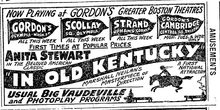
"My father was a typical bourgeois. The theatre business wasn't formal enough for him. Some people he admired on the screen, but couldn't do business with. Charlie Chaplin, for instance; he couldn't stand him personally. Father was a banker; the sooner he could put on banking clothes, the more relaxed he was. Louis Mayer he regarded as perhaps overenthusiastic but an honorable man, far more than most of the people in the business."
Gordon, as a director and member of the executive committee, played an important role in this evolution. He resigned from the directorate in 1923 but as one of the largest stockholders continued active in the management of First National Pictures until control of the corporation was acquired by Warner Bros. Pictures, Inc., in 1928. Meanwhile he disposed of his interest in Olympia Theatres, Inc., to the Paramount Famous Lasky Corp. in 1925. According to the Boston Daily Globe, the transaction was reportedly valued at $12 million and included Gordon's holdings in 38 moving picture playhouses in New England. [4]
Widely known for his philanthropic interests, he was a trustee of the Beth Israel hospital in Boston and a director of the Associated Jewish Philanthropies of that city and the Hebrew Ladies home at Dorchester, Mass. He was non-sectarian in his benefactions, however, giving generously to Christian as well as Jewish institutions and causes. Among these was the Baptist hospital in Boston, to which he donated the Gordon Piazza. A man of innumerable private charities, he helped many of his employees to build homes and at Christmas time made gifts to hundreds of children.
Possessing great energy, courage and driving power, he overcame the handicap of serious ill health in his youth and became a successful and respected figure in the motion picture industry. He was married at Rochester, N.Y., Aug. 25, 1909, to Sarah Anna, daughter of Abraham Edinberg, a merchant of Worcester, Mass., and they had three children—Alvin, William and Marion. As retold by his daughter: [5]
"He was a powerhouse, an impossible father and not a very good husband, but he was terribly, terribly intelligent. He never owned a house until he was sixty. He rented those huge places already furnished, and Mother would have to accommodate herself. ... One of the biggest houses was in Jamaica Plain. It had a bowling alley in the garage. And you know that painting by John Singer Sargent of the three young girls, The Daughters of Edward Darley Boit? We lived in that house for a while."
Gordon died at Weston, Mass., June 3, 1938.

Cecil Blount DeMille was an American filmmaker and actor. Between 1914 and 1958, he made 70 features, both silent and sound films. He is acknowledged as a founding father of American cinema and the most commercially successful producer-director in film history. His films were distinguished by their epic scale and by his cinematic showmanship. His silent films included social dramas, comedies, Westerns, farces, morality plays, and historical pageants. He was an active Freemason and member of Prince of Orange Lodge #16 in New York City.
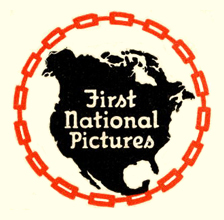
First National Pictures was an American motion picture production and distribution company. It was founded in 1917 as First National Exhibitors' Circuit, Inc., an association of independent theatre owners in the United States, and became the country's largest theater chain. Expanding from exhibiting movies to distributing them, the company reincorporated in 1919 as Associated First National Theatres, Inc. and Associated First National Pictures, Inc.
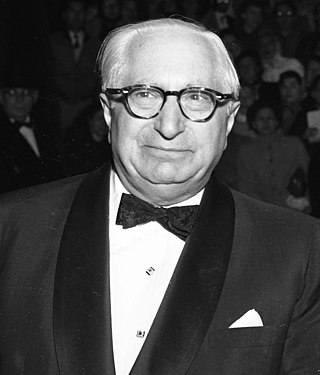
Louis Burt Mayer was a Canadian-American film producer and co-founder of Metro-Goldwyn-Mayer studios (MGM) in 1924. Under Mayer's management, MGM became the film industry's most prestigious movie studio, accumulating the largest concentration of leading writers, directors, and stars in Hollywood.

Limelight is a 1952 American comedy-drama film written, produced, directed by, and starring Charlie Chaplin, based on a novella by Chaplin titled Footlights. The score was composed by Chaplin and arranged by Ray Rasch.
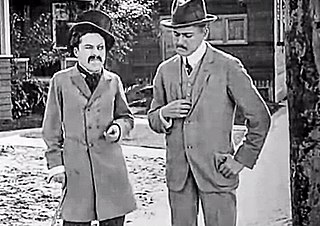
Making a Living is the first film starring Charlie Chaplin. A one-reel comedy short, it was completed in three days at Keystone Studios in Los Angeles, California and was released for distribution on February 2, 1914. In it Chaplin portrays a charming swindler who runs afoul of a news reporter and a Keystone Cop. In addition to co-writing the "scenario" and directing the production, Henry Lehrman performs as the principal supporting character.
United States v. Paramount Pictures, Inc., 334 U.S. 131 (1948), was a landmark United States Supreme Court antitrust case that decided the fate of film studios owning their own theatres and holding exclusivity rights on which theatres would show their movies. It would also change the way Hollywood movies were produced, distributed, and exhibited. It also opened the door for more foreign and independent films to be shown in U.S. theaters. The Supreme Court affirmed the United States District Court for the Southern District of New York's ruling that the existing distribution scheme was in violation of United States antitrust law, which prohibits certain exclusive dealing arrangements.

William Wadsworth Hodkinson, known more commonly as W. W. Hodkinson, was born in Independence, Kansas. Known as The Man Who Invented Hollywood, he opened one of the first movie theaters in Ogden, Utah in 1907 and within just a few years changed the way movies were produced, distributed, and exhibited. He became a leading West Coast film distributor in the early days of motion pictures and in 1914 he founded and became president of the first nationwide film distributor, Paramount Pictures Corporation. Hodkinson was also responsible for doodling the mountain that became the Paramount logo also in 1914. After being driven out of Paramount, he established his own independent distribution company, the W. W. Hodkinson Corporation, in 1917, before selling it off in 1924. He left the motion picture business in 1929 to form Hodkinson Aviation Corporation, and later formed the Central American Aviation Corporation and Companía Nacional de Aviación in Guatemala.

The 1st Academy Awards ceremony, presented by the Academy of Motion Picture Arts and Sciences (AMPAS) and hosted by AMPAS president Douglas Fairbanks, honored the best films from 1 August 1927 to 31 July 1928 and took place on May 16, 1929, at a private dinner held at the Hollywood Roosevelt Hotel in Los Angeles, California. Tickets cost $5 ; 270 people attended the event, which lasted 15 minutes. It is the only Academy Awards ceremony not broadcast on either radio or television; a radio broadcast was introduced for the 2nd Academy Awards.

Marcus Loew was an American business magnate and a pioneer of the motion picture industry who formed Loew's Theatres and the Metro-Goldwyn-Mayer film studio (MGM).
Walter Reade was the name of a father and son who had an extensive career in the United States motion picture industry.

Pennies from Heaven is a 1981 American musical romantic drama film directed by Herbert Ross, based on the 1978 BBC television drama of the same name. Dennis Potter adapted his screenplay from the BBC series for American audiences, changing its setting from London and the Forest of Dean to Depression-era Chicago and rural Illinois.

Billy West was a silent film actor, producer, and director. Active during the silent film era, he is best known as the premier Charlie Chaplin impersonator. He was a star in his own right, appearing in more than 100 films for nine different companies. Beyond acting, he also directed short comedies in the 1910s and '20s, and produced films. West retired as an actor in 1935, but remained in the employ of Columbia Pictures into the 1950s.
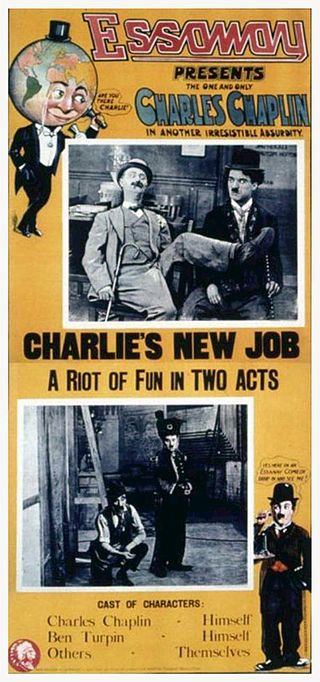
The Chicago film industry is a central hub for motion picture production and exhibition that was established before Hollywood became the undisputed capital of film making. In the early 1900s, Chicago boasted the greatest number of production companies and filmmakers. Essanay Studios founded by George K. Spoor was one of the earliest successful studios to produce movies in Chicago, employing stars such as Charlie Chaplin and Gloria Swanson. Actor and co-founder of Essanay Studios, Broncho Billy Anderson gave birth to the western genre. Early film companies such as Essanay Studios produced multiple silent films every week and rented viewing equipment to showcase the latest cinematography to the public. This rental culture gave birth to the popularity of Nickelodeons up until the Great Depression. However, due to the high demand for motion pictures during this time, a black market for films and equipment developed. The Motion Picture Patents Company, established in 1909 as a conglomerate of the major studios, sought to eliminate all illegal use of patented film equipment. As a result, independent ventures entered the film scene. Independents drove the film industry to the west to avoid legal trouble with the trust of major film companies united under the Motion Picture Patents Company. The west offered fairer weather and scenery that better accommodated film making. Not until the 1980s and early 21st century has Chicago experienced a film production revival. Blockbusters, such as Blues Brothers, Sixteen Candles, and The Dark Knight, have rejuvenated the Chicago film scene.
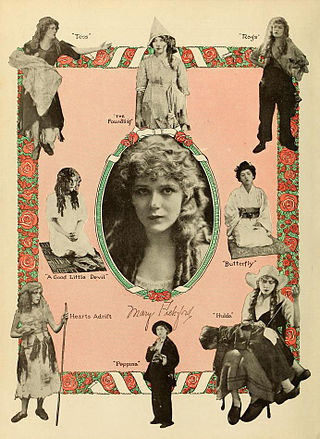
Mary Pickford (1892–1979) was a Canadian-American motion picture actress, producer, and writer. During the silent film era she became one of the first great celebrities of the cinema and a popular icon known to the public as "America's Sweetheart".
William J. J. Gordon was an inventor and psychologist. He is recognized as the co-creator of a problem solving approach called synectics, which he developed along with George M. Prince while working in the Invention Design Group of Arthur D. Little.

Douglas Elton Fairbanks Sr. was an American actor and filmmaker, best known for his swashbuckling roles in silent films. One of the biggest stars of the silent era, Fairbanks was referred to as "The King of Hollywood". He was also a founding member of United Artists as well as the Motion Picture Academy and hosted the 1st Academy Awards in 1929.
Showmen's Trade Review was a weekly trade magazine for exhibitors and distributors of motion pictures published by Charles E. "Chick" Lewis out of offices in New York City.

A Yankee Princess is a 1919 American silent comedy-drama film produced and distributed by the Vitagraph Company of America. It was directed by David Smith and stars Bessie Love, who also wrote the screenplay. It is a lost film.
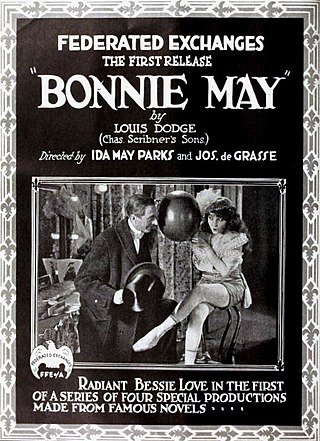
Bonnie May is a lost silent 1920 American comedy-drama film based on the 1916 novel by Louis Dodge. It was directed by Ida May Park and Joseph De Grasse and starred Bessie Love. It was produced by Andrew J. Callaghan Productions and distributed by Federated Film Exchanges of America, Inc.

Three Who Paid is a 1923 American silent Western film directed by Colin Campbell, and starring Dustin Farnum, with Bessie Love and Frank Campeau. The film was based on the 1922 short story by George Owen Baxter, and was produced and distributed through Fox Film.